-
 Bitcoin
Bitcoin $117,953.1650
-0.44% -
 Ethereum
Ethereum $3,404.6769
7.20% -
 XRP
XRP $3.2145
7.63% -
 Tether USDt
Tether USDt $1.0001
0.01% -
 BNB
BNB $717.7875
3.79% -
 Solana
Solana $175.1351
5.00% -
 USDC
USDC $0.9997
-0.02% -
 Dogecoin
Dogecoin $0.2140
6.36% -
 TRON
TRON $0.3125
3.78% -
 Cardano
Cardano $0.7984
6.61% -
 Hyperliquid
Hyperliquid $46.3875
-2.89% -
 Stellar
Stellar $0.4661
-1.97% -
 Sui
Sui $3.9769
-0.95% -
 Chainlink
Chainlink $17.0299
3.26% -
 Hedera
Hedera $0.2442
2.02% -
 Bitcoin Cash
Bitcoin Cash $494.1589
-0.49% -
 Avalanche
Avalanche $22.7305
3.32% -
 Shiba Inu
Shiba Inu $0.0...01429
3.24% -
 UNUS SED LEO
UNUS SED LEO $8.8207
-0.20% -
 Toncoin
Toncoin $3.2223
3.73% -
 Litecoin
Litecoin $99.4978
2.54% -
 Polkadot
Polkadot $4.1940
2.13% -
 Monero
Monero $341.6175
2.76% -
 Pepe
Pepe $0.0...01357
4.19% -
 Uniswap
Uniswap $8.8637
-2.74% -
 Bitget Token
Bitget Token $4.7017
0.48% -
 Dai
Dai $0.9998
-0.03% -
 Ethena USDe
Ethena USDe $1.0003
-0.04% -
 Aave
Aave $320.8518
-2.86% -
 Bittensor
Bittensor $428.9747
-1.94%
What is NFT flipping?
NFT flipping involves buying and reselling digital assets for profit, relying on market trends, timing, and strategic tools to capitalize on price fluctuations in blockchain-based marketplaces.
Jul 13, 2025 at 03:49 pm
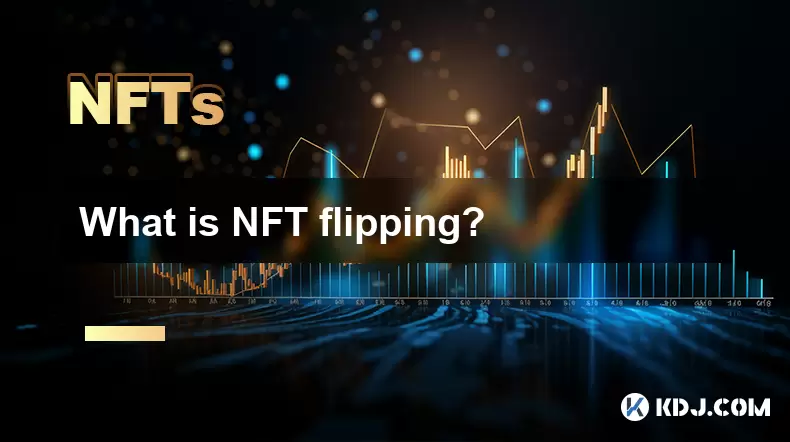
Understanding the Concept of NFT Flipping
NFT flipping refers to the practice of buying and quickly reselling non-fungible tokens (NFTs) for profit. This activity has become increasingly popular in the digital asset market, where collectors and investors aim to capitalize on price fluctuations. Similar to house flipping in real estate, NFT flipping involves purchasing a digital collectible at a lower price and selling it shortly after at a higher value.
The process often relies on timing and market trends. Flippers monitor new releases, community engagement, and platform analytics to identify undervalued assets. Once an opportunity is spotted, they acquire the NFT and wait for demand to increase before listing it again for sale.
How Does NFT Flipping Work?
To successfully engage in NFT flipping, one must understand how the blockchain-based marketplace functions. The process typically begins with identifying promising projects or artists that are gaining traction. Platforms like OpenSea, Rarible, and LooksRare provide tools to track emerging trends.
- Research trending collections using volume metrics and floor prices
- Purchase underpriced NFTs during drops or early listings
- Monitor social media channels and Discord communities for hype signals
- List the NFT on a secondary market once interest rises
Successful flippers also pay attention to gas fees and marketplace royalties, which can eat into profits if not accounted for properly. Additionally, some flippers use bots or alerts to automate their buying and selling strategies.
Popular Types of NFTs Used for Flipping
Not all NFTs are equally viable for flipping. Certain categories tend to attract more speculative behavior due to their perceived short-term value:
- Profile Picture (PFP) Collections: Projects like Bored Ape Yacht Club or CryptoPunks are frequently traded due to strong brand recognition.
- Generative Art: Pieces created through algorithmic processes often gain momentum quickly, especially from well-known creators.
- Virtual Real Estate: Plots in metaverse platforms such as Decentraland or The Sandbox have been flipped for gains based on location and development potential.
- Game Items: Rare skins, weapons, or characters in blockchain games like Axie Infinity or Gods Unchained are actively bought and sold.
Each category has its own dynamics, so understanding what drives value in these markets is crucial for successful flipping.
Risks Involved in NFT Flipping
While NFT flipping can be lucrative, it comes with significant risks. One of the primary concerns is market volatility. Prices can surge rapidly but also collapse just as fast, especially when hype fades.
Another risk is rug pulls or scams, where project creators abandon the collection after raising funds, leaving investors with worthless assets. Due diligence is essential before investing in any NFT project.
Additionally, liquidity issues may arise. Some NFTs are difficult to sell because there’s little buyer interest. Holding onto an illiquid asset can result in losses, particularly if market conditions shift unfavorably.
Lastly, transaction costs on blockchains like Ethereum can be high during peak times, reducing overall profitability if not carefully managed.
Tools and Strategies for Effective NFT Flipping
To maximize returns and minimize risks, many flippers utilize specific tools and strategies:
- Market Analytics Dashboards: Platforms like DappRadar and Rarity.tools offer insights into floor prices, trading volumes, and rarity scores.
- Discord and Twitter Monitoring: Staying updated on announcements, collaborations, or influencer endorsements helps spot opportunities early.
- Sniping Tools: Software like Rarity.tools Snipe or Gem allows users to purchase newly listed NFTs instantly, increasing chances of securing low-priced items.
- Portfolio Management Apps: Tracking performance across multiple wallets and marketplaces helps assess profitability and adjust strategies accordingly.
Timing plays a critical role in flipping success. Many flippers focus on entering the market during minting events or shortly after launch when prices are still low.
FAQ: Frequently Asked Questions About NFT Flipping
Q1: Is NFT flipping legal?
Yes, NFT flipping is legal as long as the transactions comply with local laws and regulations regarding digital assets. However, tax obligations may apply depending on jurisdiction.
Q2: Can I flip NFTs without creating them?
Absolutely. Most flippers buy existing NFTs rather than minting new ones. All you need is a crypto wallet and access to NFT marketplaces.
Q3: What's the best time to flip an NFT?
The ideal time to flip occurs when demand spikes, often triggered by celebrity endorsements, platform integrations, or viral moments within the community.
Q4: How much money do I need to start flipping NFTs?
You can begin with a small budget. Some NFTs are available for less than $10, though initial investments typically range between $100 to $500 to allow for diversification and absorb transaction fees.
Disclaimer:info@kdj.com
The information provided is not trading advice. kdj.com does not assume any responsibility for any investments made based on the information provided in this article. Cryptocurrencies are highly volatile and it is highly recommended that you invest with caution after thorough research!
If you believe that the content used on this website infringes your copyright, please contact us immediately (info@kdj.com) and we will delete it promptly.
- C2 Blockchain, DOG Coins, and Acquisition: A Meme-Native Bitcoin Asset
- 2025-07-17 20:30:12
- DeFi Evolution: Hyperion, HYPE Token, and the Hyperliquid Ecosystem
- 2025-07-17 21:30:12
- BlockDAG's NO VESTING PASS: A Crypto Game Changer Amid CRO & ONDO Swings
- 2025-07-17 21:30:12
- Ethereum, Pepe, Crypto: Navigating the Wild West of Digital Assets
- 2025-07-17 20:30:12
- Ethereum ETF Skyrockets: Record-Breaking Inflows Signal Bullish Trend
- 2025-07-17 22:10:12
- SOL, Bounce, Trap: Decoding Crypto's Latest Moves
- 2025-07-17 22:10:12
Related knowledge
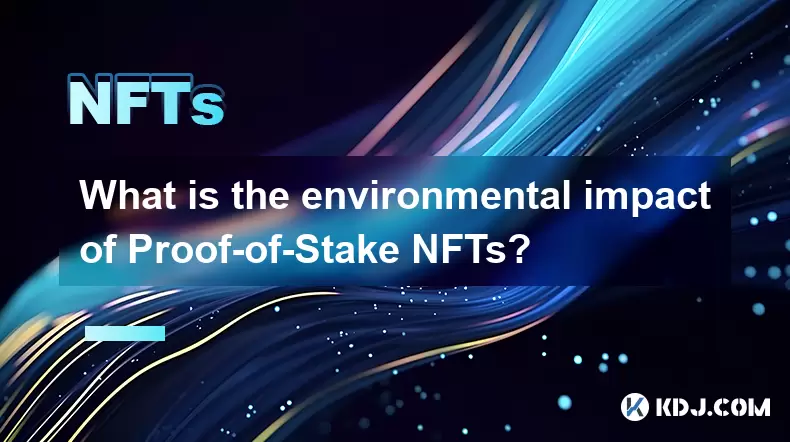
What is the environmental impact of Proof-of-Stake NFTs?
Jul 17,2025 at 07:14pm
Understanding the Basics of Proof-of-Stake NFTsProof-of-Stake (PoS) is a consensus mechanism used by blockchain networks to validate transactions and ...
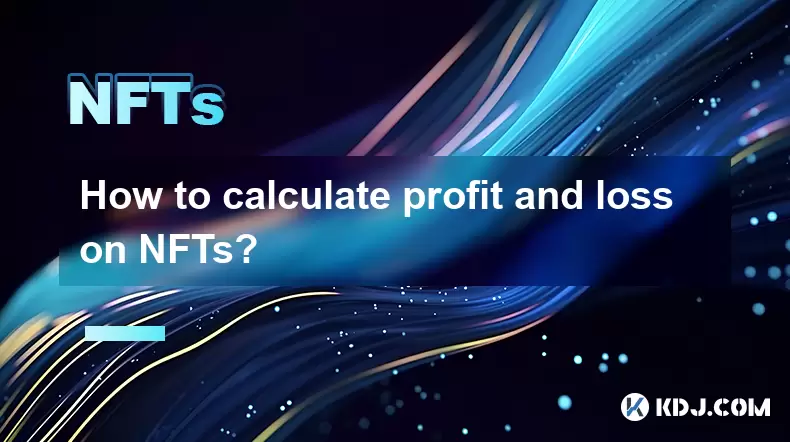
How to calculate profit and loss on NFTs?
Jul 17,2025 at 10:07pm
Understanding the Basics of NFT Profit and Loss CalculationWhen it comes to Non-Fungible Tokens (NFTs), calculating profit and loss is crucial for inv...
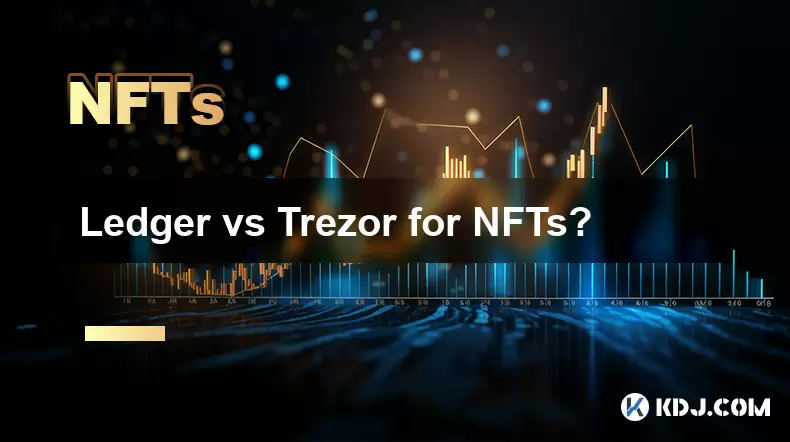
Ledger vs Trezor for NFTs?
Jul 17,2025 at 09:28pm
What Are Ledger and Trezor in the Context of NFTs?Ledger and Trezor are two of the most popular hardware wallets used for securing digital assets, inc...

What is a hardware wallet for NFTs?
Jul 17,2025 at 07:00pm
Understanding the Concept of a Hardware Wallet for NFTsA hardware wallet for NFTs is a physical device designed to securely store non-fungible tokens ...
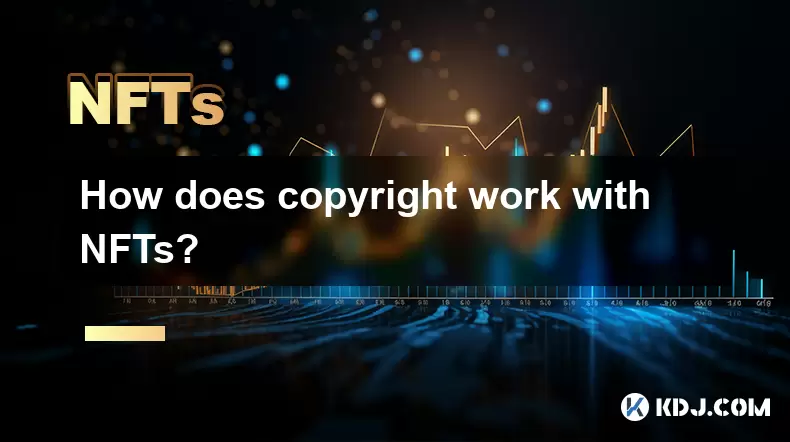
How does copyright work with NFTs?
Jul 17,2025 at 04:07pm
Understanding the Basics of NFTs and CopyrightNon-Fungible Tokens (NFTs) have revolutionized how digital assets are perceived and traded. However, man...
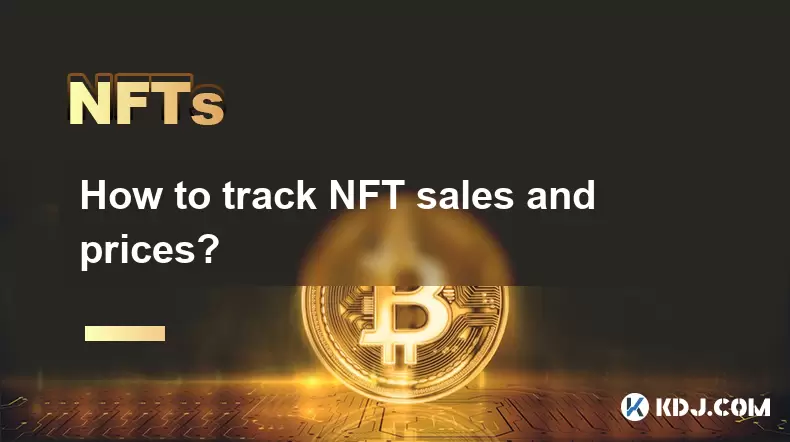
How to track NFT sales and prices?
Jul 17,2025 at 07:56pm
Understanding the Basics of NFT TrackingTracking NFT sales and prices begins with understanding what NFTs are and how they function on blockchain netw...

What is the environmental impact of Proof-of-Stake NFTs?
Jul 17,2025 at 07:14pm
Understanding the Basics of Proof-of-Stake NFTsProof-of-Stake (PoS) is a consensus mechanism used by blockchain networks to validate transactions and ...

How to calculate profit and loss on NFTs?
Jul 17,2025 at 10:07pm
Understanding the Basics of NFT Profit and Loss CalculationWhen it comes to Non-Fungible Tokens (NFTs), calculating profit and loss is crucial for inv...

Ledger vs Trezor for NFTs?
Jul 17,2025 at 09:28pm
What Are Ledger and Trezor in the Context of NFTs?Ledger and Trezor are two of the most popular hardware wallets used for securing digital assets, inc...

What is a hardware wallet for NFTs?
Jul 17,2025 at 07:00pm
Understanding the Concept of a Hardware Wallet for NFTsA hardware wallet for NFTs is a physical device designed to securely store non-fungible tokens ...

How does copyright work with NFTs?
Jul 17,2025 at 04:07pm
Understanding the Basics of NFTs and CopyrightNon-Fungible Tokens (NFTs) have revolutionized how digital assets are perceived and traded. However, man...

How to track NFT sales and prices?
Jul 17,2025 at 07:56pm
Understanding the Basics of NFT TrackingTracking NFT sales and prices begins with understanding what NFTs are and how they function on blockchain netw...
See all articles

























































































